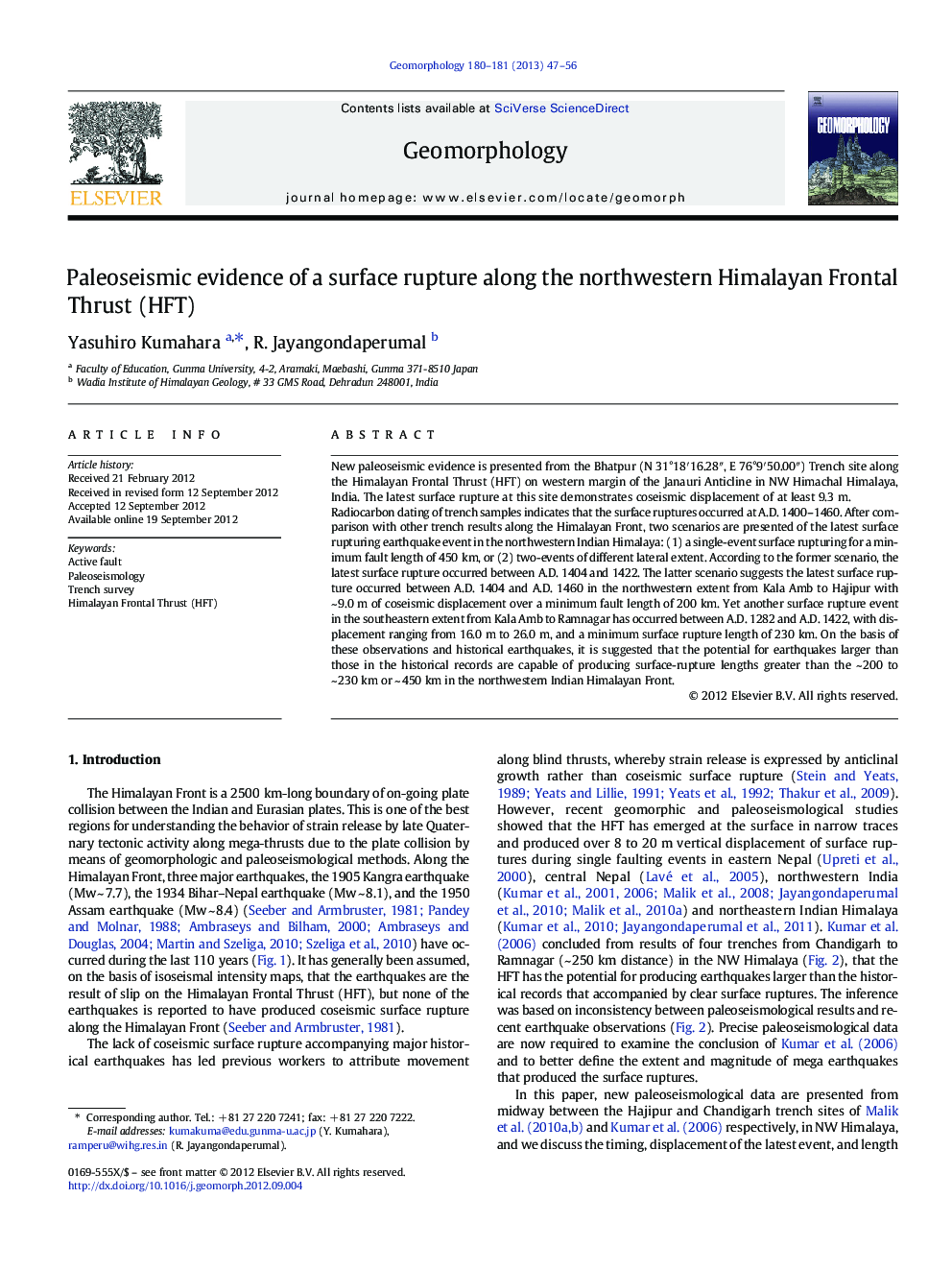| Article ID | Journal | Published Year | Pages | File Type |
|---|---|---|---|---|
| 4685005 | Geomorphology | 2013 | 10 Pages |
New paleoseismic evidence is presented from the Bhatpur (N 31°18′16.28″, E 76°9′50.00″) Trench site along the Himalayan Frontal Thrust (HFT) on western margin of the Janauri Anticline in NW Himachal Himalaya, India. The latest surface rupture at this site demonstrates coseismic displacement of at least 9.3 m.Radiocarbon dating of trench samples indicates that the surface ruptures occurred at A.D. 1400–1460. After comparison with other trench results along the Himalayan Front, two scenarios are presented of the latest surface rupturing earthquake event in the northwestern Indian Himalaya: (1) a single-event surface rupturing for a minimum fault length of 450 km, or (2) two-events of different lateral extent. According to the former scenario, the latest surface rupture occurred between A.D. 1404 and 1422. The latter scenario suggests the latest surface rupture occurred between A.D. 1404 and A.D. 1460 in the northwestern extent from Kala Amb to Hajipur with ~ 9.0 m of coseismic displacement over a minimum fault length of 200 km. Yet another surface rupture event in the southeastern extent from Kala Amb to Ramnagar has occurred between A.D. 1282 and A.D. 1422, with displacement ranging from 16.0 m to 26.0 m, and a minimum surface rupture length of 230 km. On the basis of these observations and historical earthquakes, it is suggested that the potential for earthquakes larger than those in the historical records are capable of producing surface-rupture lengths greater than the ~ 200 to ~ 230 km or ~ 450 km in the northwestern Indian Himalayan Front.
